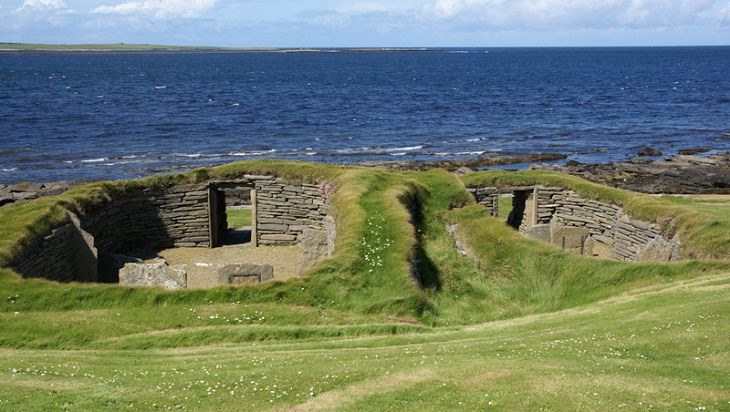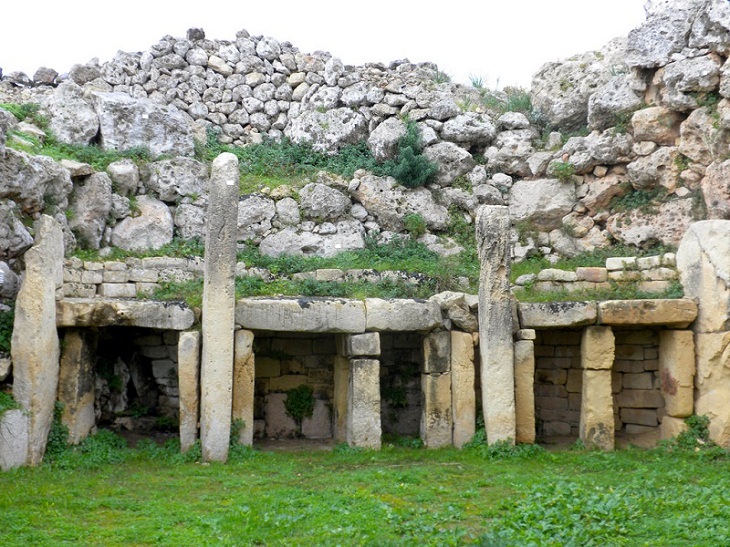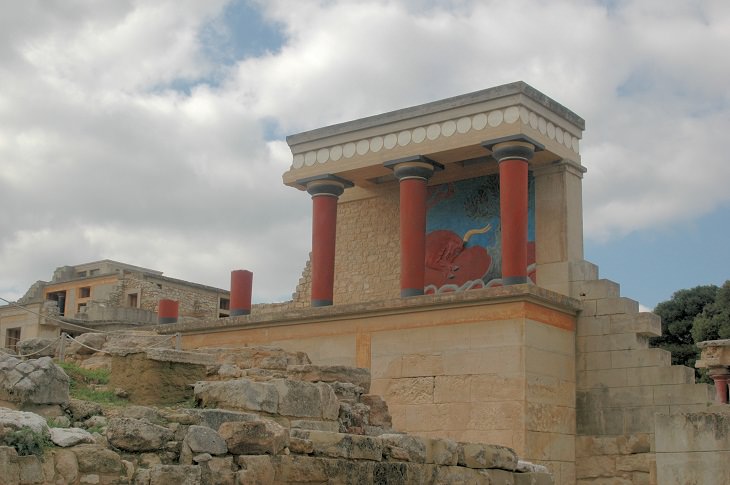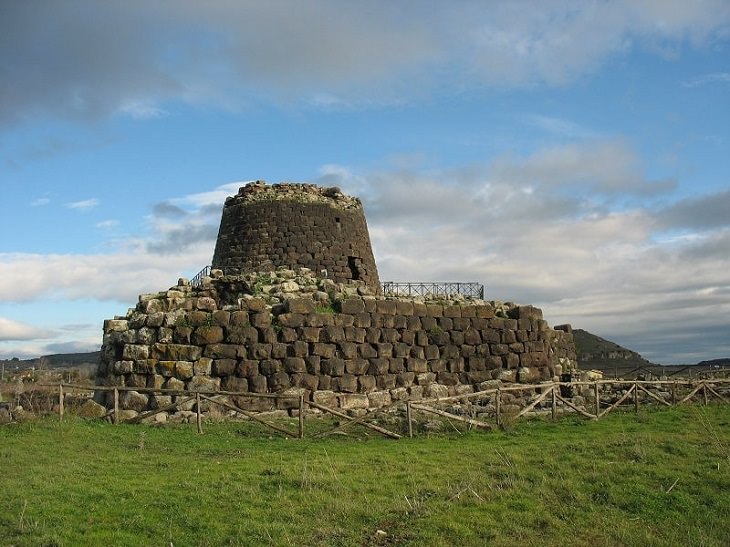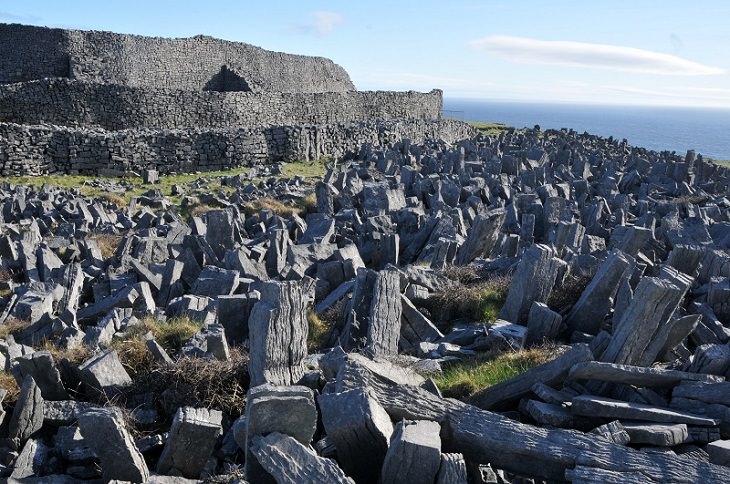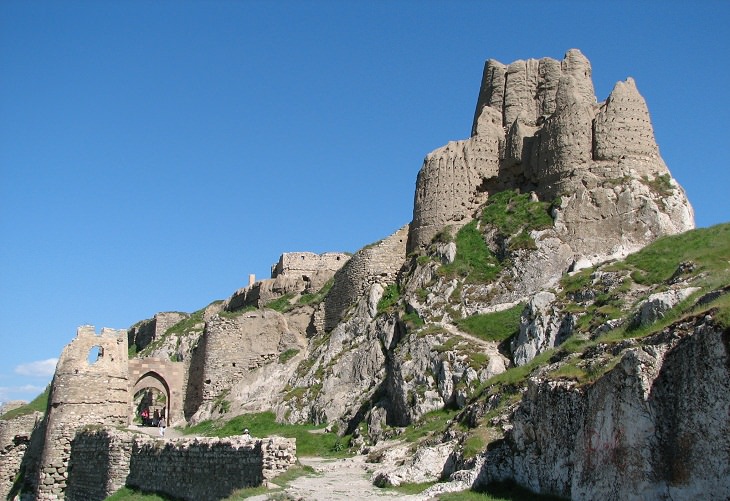The Ġgantija Temples are one of the most important and mysterious archeological sites in the world. Located on the small Maltese island of Gozo in the Mediterranean Sea, these temples were built between 5,600 and 5,200 years ago and are even older than such sites as Stonehenge and the Egyptian pyramids. The complex is made up of two temples built side by side and is surrounded by a single boundary wall. The name of the temples refers to the Maltese word for giant, which is ġgant. It is believed that the site of the temple is associated with a race of mysterious giants.
The Ggantija temples were built when metal tools were not being used in this part of the world and even the wheel had not yet been invented. Some marks on some of the stones show that the huge slabs were moved with ball bearings or pulleys. Archeologists, though, still aren’t quite sure what the temples were used for. However, evidence of animal bones has been found here which suggests the site was used for animal sacrifice. In fact, one can even find images carved into the stone of goats, sheep, and pigs here.
3. Shunet el-Zebib, Egypt
One of the oldest buildings in Egypt, the Shunet el-Zebib is also one of the oldest existing mud-brick buildings in the world. It was built around 2750 BC by the Ancient Egyptian king Khasekhemwy who ruled during ancient Egypt’s second dynasty and the building served as his royal monument. The structure consists of two sections – an underground tomb for the king and an above-ground enclosure where Khasekhemwy’s followers would assemble to pay their respects to their late ruler.
Archeologists consider Shunet el-Zebib to be a direct precursor to Egypt’s renowned pyramids. In fact, Khasekhemwy’s successor, Djoser built the Saqqara Step Pyramid, known as the first true pyramid inspired by Shunet el-Zebib’s design. Hence, this building is of great architectural importance, as it depicts the earliest stages of the evolution of the Egyptian pyramids. Over the centuries, the structure has suffered plenty of destruction and in 2007, archeologists started a project to restore Shunet el-Zebib to its former glory.
4. Palace of Knossos, Greece
The Palace of Knossos is located south of modern-day Heraklion near the north coast of Crete and was built by a civilization called the Minoans from the Bronze Age. The palace covers about 150,000 square feet (14,000 square meters), and used to be surrounded by a town. It found recognition when it was excavated and restored by a team led by British archeologist Arthur Evans in the early 20th century.
When the palace was first constructed "it must have been a remarkable sight, quite unlike anything seen on Crete before," writes J. Lesley Fitton in her book "Minoans (Peoples of the Past)". The author also notes that while other settlements on Crete built palaces of their own around this time, none of them were as large or impressive as Knossos.
Knossos was often hit by natural disasters or other catastrophes and this caused plenty of damage to the palace. The structure was rebuilt many times but was completely destroyed around 1300 BC. A century later, Knossos was completely abandoned and the palace was only discovered in the early 1900s.
5. Nuraghe Santu Antine, Italy
One of the greatest archeological sites in Sardinia, Italy, Nuraghe Santu Antine is a megalithic building located in the Valley of Nuraghi. The locals call the structure Sa Domu de su Re, or the “House of the King,” which indicates the purpose of this building. Santu Antine was built during the Bronze Age, around 1600 BC, with the use of basalt, a local volcanic stone.
The building is a nuraghe, a type of ancient megalithic edifice commonly found throughout the island of Sardinia. Literally, it means “hollow pile of stones” and these structures are built of large blocks of basalt, a rock that can be found on the island.
The main tower of Santu Antine is still the most visible one and there are three smaller towers positioned around it. It is believed that a large village existed around the nuraghe but more evidence for the same is still needed. Regardless, Santu Antine remains a great testament to the engineering and architectural skills of the people who lived on Sardinia and built the structure during the Bronze Age.
6. Dún Aonghasa, Ireland
Dún Aonghasa is one of Ireland's most ancient wonders and is perched defiantly on a 100 m (330 ft) cliff over the harsh Atlantic Ocean. Built around 1100 BC, this cliffside semi-circular fort is one of the best-preserved forts anywhere in the world. This Iron Age fort has mystified explorers and researchers for centuries but it is now assumed that the earliest people had been living at the site since 1500 BC. The structure was probably first built when large amounts of debris were piled up against the site’s large boulders. Over the next many centuries, the fort slowly grew into the shape we get to see it in today.
Interestingly, though, no one knows who Aonghas was. It is assumed that he might have been a noble or some king. But the building remains an impressive landmark. One of the most distinctive features of Dún Aonghasa is the jagged defensive stones, known as a Chevaux de Frise, around the fort that were added in 700 BC. Today, Dún Aonghasa is one of the most famous tourist destinations in Ireland and is a protected National Monument.
7. Van Fortress, Turkey
The Van Fortress or Van Citadel used to be the symbol of the power of the Urartian kings that ruled over the region at the beginning of the first millennium BC. It was built by the ancient kingdom of Urartu in modern-day Turkey, between the 8th – 7th centuries BC.
Apart from being magnificent to look at, the Van Fortress is a great example of Urartian expertise and also contains several records giving details of the kingdom’s 250-year reign. Rock chambers for the kings, open-air sanctuaries, inscribed stelae (stone or wooden slab), building inscriptions, and royal annals inscribed on the rocks, can be found everywhere inside the fort. The walls of the structure have been built using rocks peculiar to Urartian architecture that can be found all around. The lower courses of the citadel are mostly Urartian, too.
After the fall of the Urartu Kingdom, the for was continuously taken over by groups like the Medes, Achaemenids, Armenians, Parthians, Romans, Sassanid Persians, Byzantines, Arabs, Seljuks, Safavids, Afsharids, Ottomans, and Russians.
Share this post with other history buffs!

